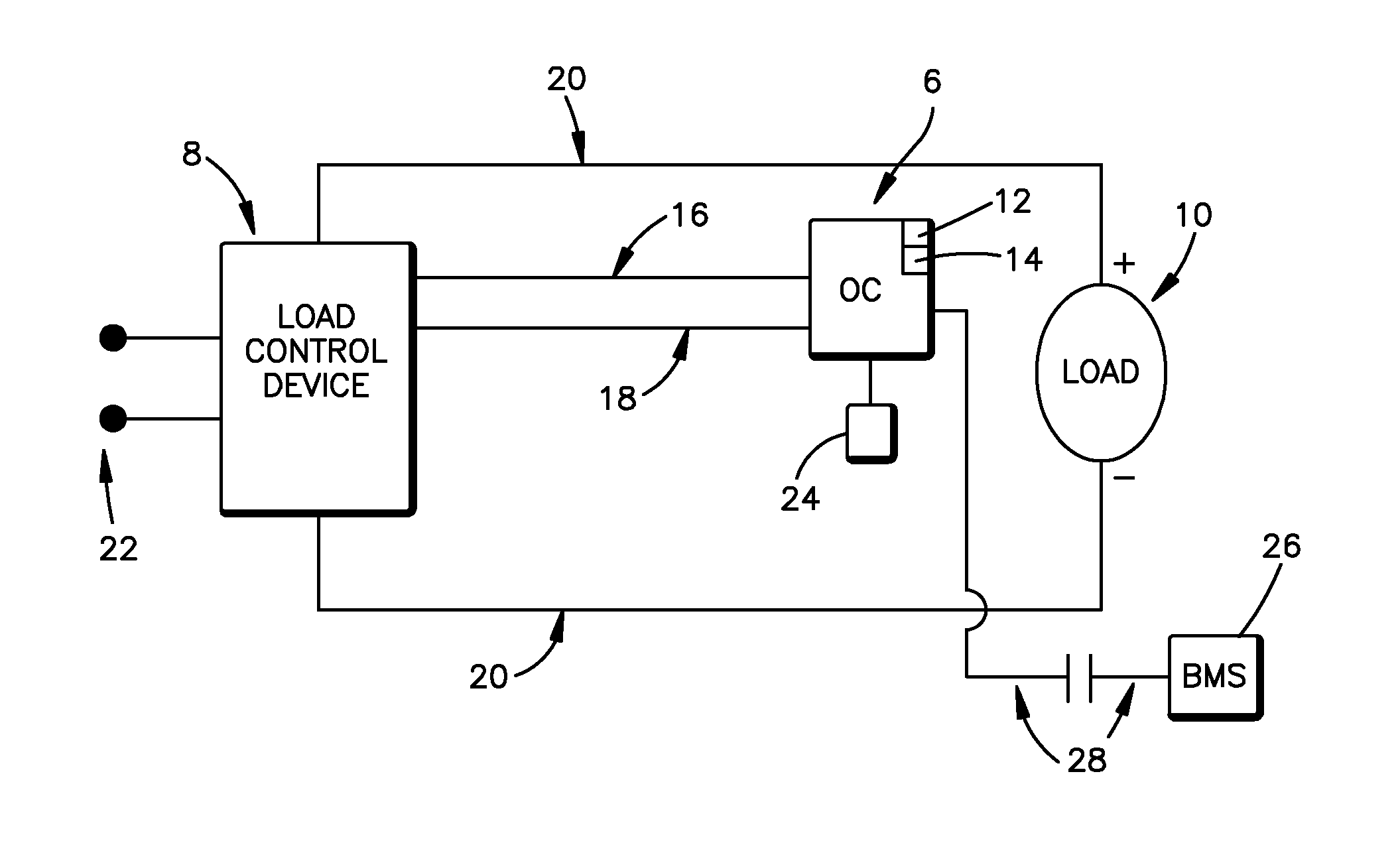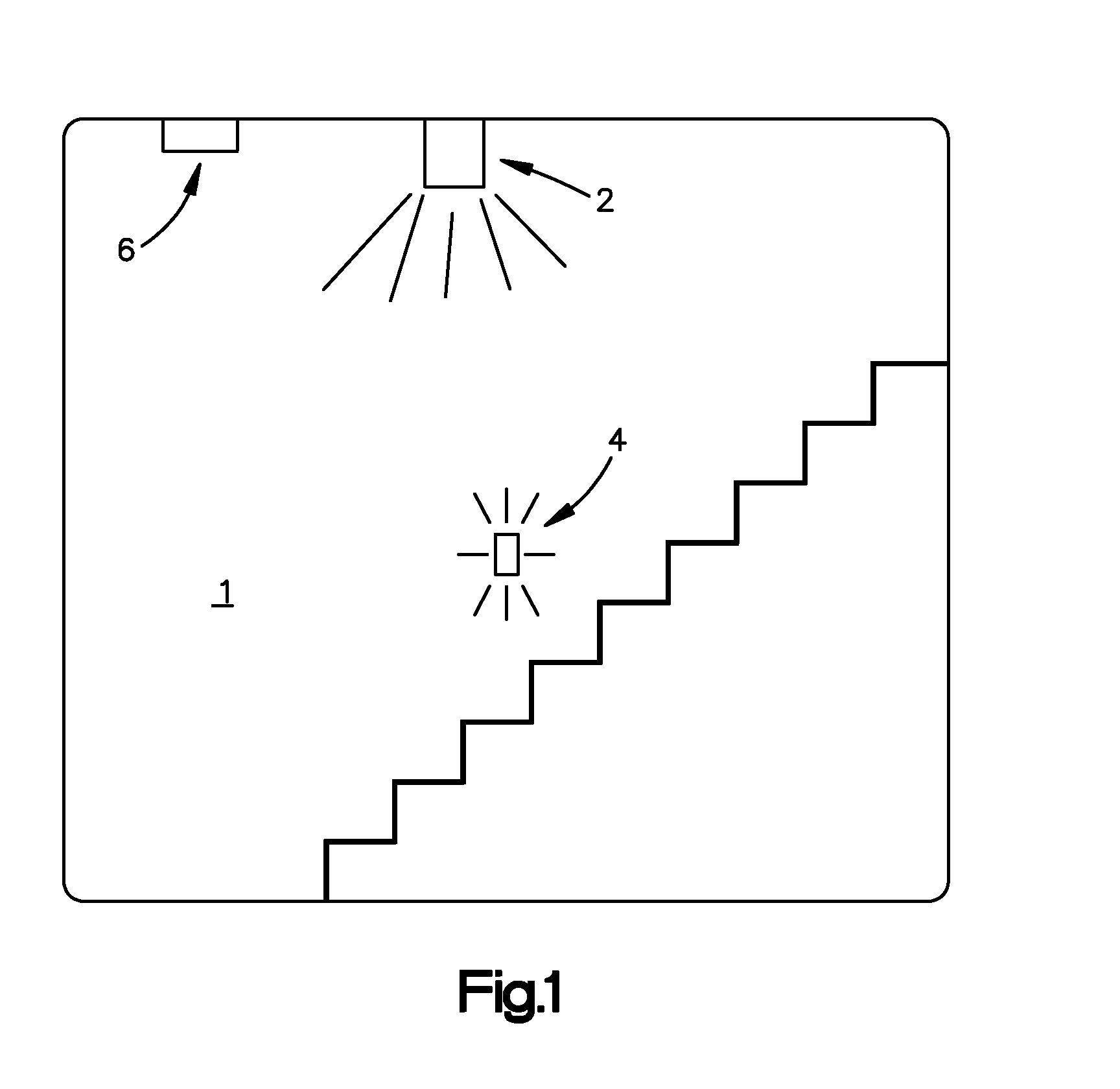System and method for occupancy sensing with enhanced functionality
a technology of occupancy sensing and enhanced functionality, applied in the field of occupancy sensing systems, can solve the problems of low-intensity ambient light failure, high-intensity light and low-intensity light configuration not providing a way, occupancy sensor failure can present a safety hazard,
- Summary
- Abstract
- Description
- Claims
- Application Information
AI Technical Summary
Benefits of technology
Problems solved by technology
Method used
Image
Examples
Embodiment Construction
[0036]A system and method are disclosed for providing fail-safe operation of a lighting system so that primary lighting associated with an occupancy sensor will be energized in the event that a low level ambient “safety” light malfunctions. As will be appreciated, this functionality may be desirable for applications in which lighting systems may impact public safety. Examples of such applications may include, but are not limited to, lighting in public staircases, parking lots, parking ramps, or other areas where public safety may be compromised if a low level ambient “safety” lighting fails to energize, etc. The disclosed system and method may find application with a variety of different types of occupancy sensing technologies, load control devices, and loads.
[0037]Certain governmental life safety organizations have standards that require low level ambient lighting in stairwells and / or other public areas even when the stairwells are not occupied. For example, the National Fire Prote...
PUM
 Login to View More
Login to View More Abstract
Description
Claims
Application Information
 Login to View More
Login to View More - R&D
- Intellectual Property
- Life Sciences
- Materials
- Tech Scout
- Unparalleled Data Quality
- Higher Quality Content
- 60% Fewer Hallucinations
Browse by: Latest US Patents, China's latest patents, Technical Efficacy Thesaurus, Application Domain, Technology Topic, Popular Technical Reports.
© 2025 PatSnap. All rights reserved.Legal|Privacy policy|Modern Slavery Act Transparency Statement|Sitemap|About US| Contact US: help@patsnap.com



